Introduction
Whether teachers realize it or not, they are continuously scaffolding instruction for their students. The dictionary definition of scaffolding is: a temporary structure on the outside of a building, made usually of wooden planks and metal poles, used by workers while building, repairing, or cleaning the building. This definition applies quite well to its’ educational connotation. Instructional scaffolding is temporary. It allows students to build, repair, and/or polish their understanding of concepts and skills. It is used temporarily to support students as they develop the required knowledge/skill needed to do something independently or progress to the next level of a skill. (For additional information on instructional scaffolding read the article – Instructional Scaffolding – Constructing Learning)
The Good Neighbors Store an Award – A Cheesy Mouse Tale of Addition with Regrouping was created with scaffolding in mind. The goal of the author was to construct a supporting framework both conceptual and procedural that students can hold on to and refer to as they learn the addition algorithm and the regrouping concept and process. The author assumed that students will possess a basic understanding of addition and addition fact knowledge when they first see/hear the book. As the book is read aloud, students are unaware of the scaffolds being constructed in their minds. Later, with teacher guidance and support, they will come to realize how to utilize these scaffolds while learning the addition with regrouping process.
The goal of the author was to construct a supporting framework both conceptual and procedural that students can hold on to and refer to as they learn the addition algorithm and the regrouping concept and process.
Layers of Scaffolding
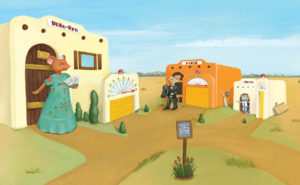

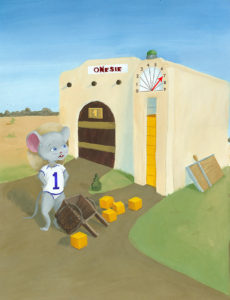
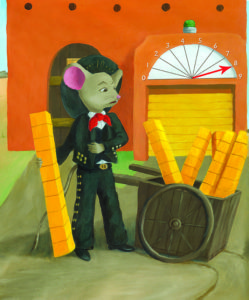
Place Value Scaffolds
The characters’ names are similar to the place value names: Onesie/ones, Tenor/tens, Hund-Red/hundreds. The characters’ size corresponds to the value of the place value his/her name corresponds to: Onesie/ones/small sized, Tenor/tens/medium sized, Hundred/hundreds/large sized. The characters’ house location corresponds to the location of the ones, tens, and hundreds place: Onesie lives in the house to the far right, Tenor lives in the house between Onesie and Hundred, Hund-Red lives in the house to the far left. The characters’ blocks of cheese mirror the base ten blocks: Onesie’s cube/units (1), Tenor’s stick/longs (10), Hund-Red’s slab/flats (100). All these elements together provide students with a solid scaffold for basic place value understanding.
Schema Scaffold
The story’s narrative creates an overarching scaffold for students – a schema for the addition with regrouping process. The characters’ primary goal: to store new cheese blocks with their existing cheese blocks given limited storage space, establishes a schema for the addition with regrouping process. The experience of combining items and storing them in limited space is an experience common to all students. Connecting new learning to an existing schema builds the students’ conceptual understanding of addition with regrouping. (For additional information on addition schema read the article – No Gimmicks, Just Schema – Addition with Regrouping)
Sequence Scaffold
The story’s narrative provides a sequence scaffold for the addition with regrouping process. The story’s plot mirrors the sequence of the addition algorithm. Onesie is the first to attempt to store his cheese blocks. When he realizes he doesn’t have enough storage space, he turns to Tenor for help. Tenor stores he cheese blocks next, and Hund-Red stores her cheese blocks last – the same order in which place values are addressed in the addition algorithm.

Base Ten Visual Model Scaffold
The characters’ cheese blocks provide a base ten visual scaffold for the addition with regrouping process. The cheese blocks being stored, regrouped, and stored again mirror the addition with regrouping process as demonstrated with base ten blocks. The cheese torch used by the characters to melt ten smaller blocks into one larger block is the icon for the regrouping process (ten smaller units regrouped into one larger unit). The base ten blocks model allows students to see how quantities within place values are manipulated throughout the addition with regrouping process for true conceptual understanding.
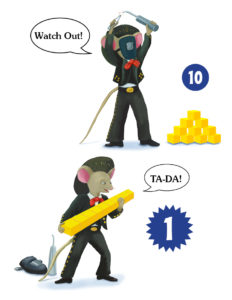

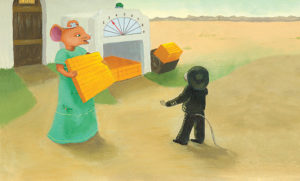
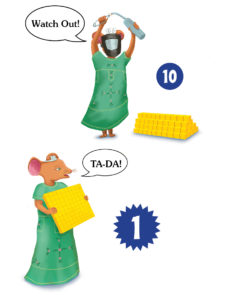
Conclusion
The combination of scaffolds, makes a strong supporting structure for students, and its construction is so effortless – reading the book aloud to students! Providing this initial support sets students up for success as they learn and retain the addition with regrouping concept and skill.

